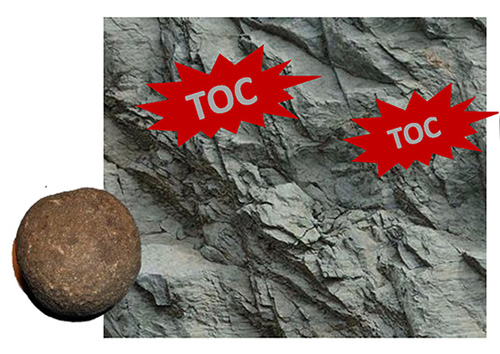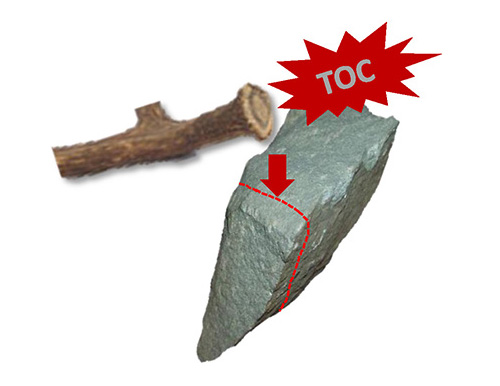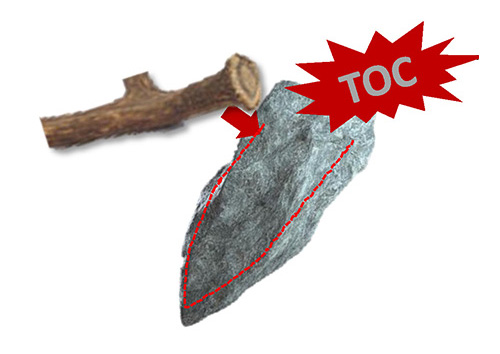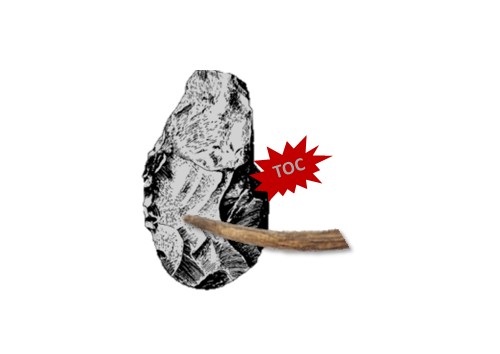Cut a virtual biface
The Palaeoindians cut stone by flaking, i.e. they struck stone at strategic points to break away flakes. The technique is called debitage. A high concentration of blank flakes may indicate the presence of a chipping station. The dig on the Kruger 2 site in Sherbrooke led to the discovery of a chipping station containing approximately 40 000 blank flakes.

The excavation of a quadrant from the chipping station sector on the Kruger 2 site in Sherbrooke.

The blank flakes come from the chipping station sector. Each bag contains flakes from the same depth level of a quadrant. Labels therefore indicate the level, quadrant, and well.
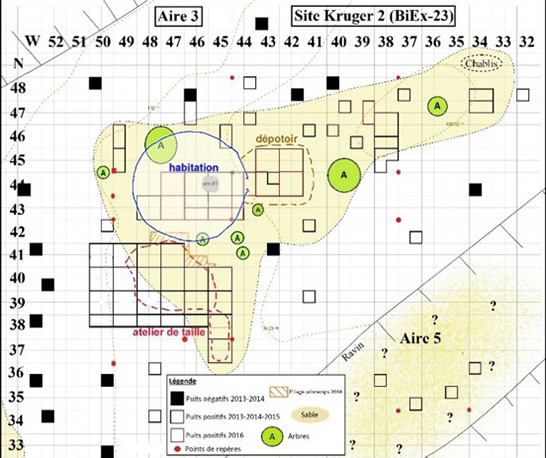
Location of different sectors of the Kruger 2 site’s area 3 in Sherbrooke, which includes the chipping station.
You will need three tools:
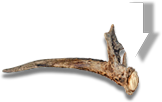
Base of a tine
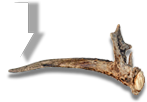
Point of a tine

Hammerstone
Step 1. Raw material
1 - You have to break away the raw material from the rock face by hitting it with the hammerstone.
2 - When you have finished breaking off a block, go to step 2.
Step 2. Flake work
1 - Your block is too thick, you have to break off a thinner flake.
2 - Move the base of the tine to the edge of the block and tap a few times on its handle
to hit and break off a big thin flake.
3 - When you have your flake, go to step 3
Step 3. Biface shape
1 - Keep only the point of the flake.
2 - Move the base of the tine and perpendicularly strike the edges of the stone
until you get the desired shape.
3 - When you are satisfied with your shape, go to step 4.
Step 4. Thinning and sharpening
1 - You must straighten the edge of the biface.
2 - Place the fine point of the centre tine toward the sharp edges, and strike.
Good job! You have finished the game and now have a great biface.
It is thin and its edge is straight.
It will be used to cut leather, nerves, and wood, as well as to dig soil and drive stakes.
You could also further work it into a projectile point or another tool.

Front view
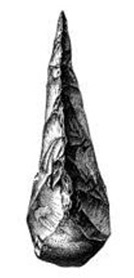
Profile view


